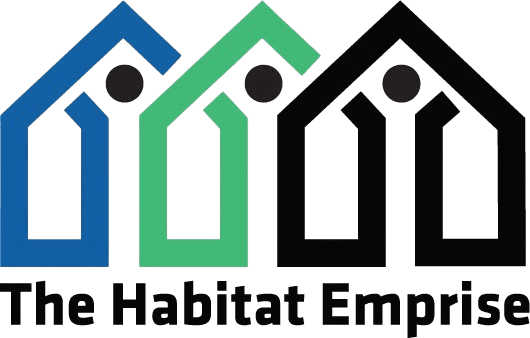At The Habitat Emprise, sustainability drives every decision we make. From material selection to construction techniques, our projects are designed to harmonize with the environment while delivering exceptional functionality. Sustainable infrastructure isn’t just possible—it’s essential for building a better future.
A Vision for Sustainable Development
The global construction industry accounts for nearly 38% of energy-related CO2 emissions, highlighting the urgent need for environmentally conscious practices. At The Habitat Emprise, we take a proactive approach, integrating renewable energy systems, eco-friendly materials, and water-efficient designs into all our projects.
Our work on UN Habitat Bangladesh exemplifies this commitment. In a flood-prone region, we designed elevated housing structures with natural drainage systems, ensuring both durability and environmental harmony. By using locally sourced bamboo, we reduced the project’s carbon footprint while supporting local economies.
Sustainable Practices in Action
We implement sustainability across every stage of our projects through:
- Smart Material Choices
- Low-carbon concrete and recycled steel reduce emissions without compromising strength.
- Locally sourced bamboo minimizes transportation impact and supports renewable practices.
- Energy Efficiency
- Solar panels and geothermal systems power up to 40% of project needs.
- Passive cooling and ventilation designs cut energy usage significantly.
- Waste Reduction
- Construction processes recycle nearly 70% of waste materials.
- Efficient planning ensures minimal resource wastage during building phases.
Our Broader Impact
Beyond individual projects, The Habitat Emprise contributes to global sustainability goals, particularly:
- Climate Resilience: By designing flood-resistant infrastructure and incorporating renewable energy, we address the challenges of climate change.
- Community Support: Our projects engage local stakeholders, creating jobs and fostering economic growth.
For instance, in Bangladesh, we collaborated with local NGOs to provide skill-building workshops for workers, ensuring long-term community benefits.
Conclusion
Building sustainably is no longer optional—it’s the way forward. At The Habitat Emprise, we are redefining infrastructure by prioritizing eco-friendly solutions that benefit both the environment and communities.
Through projects like UN Habitat Bangladesh, we demonstrate that innovation, sustainability, and impact can coexist seamlessly. Together, let’s create infrastructure that builds a greener, better tomorrow.
